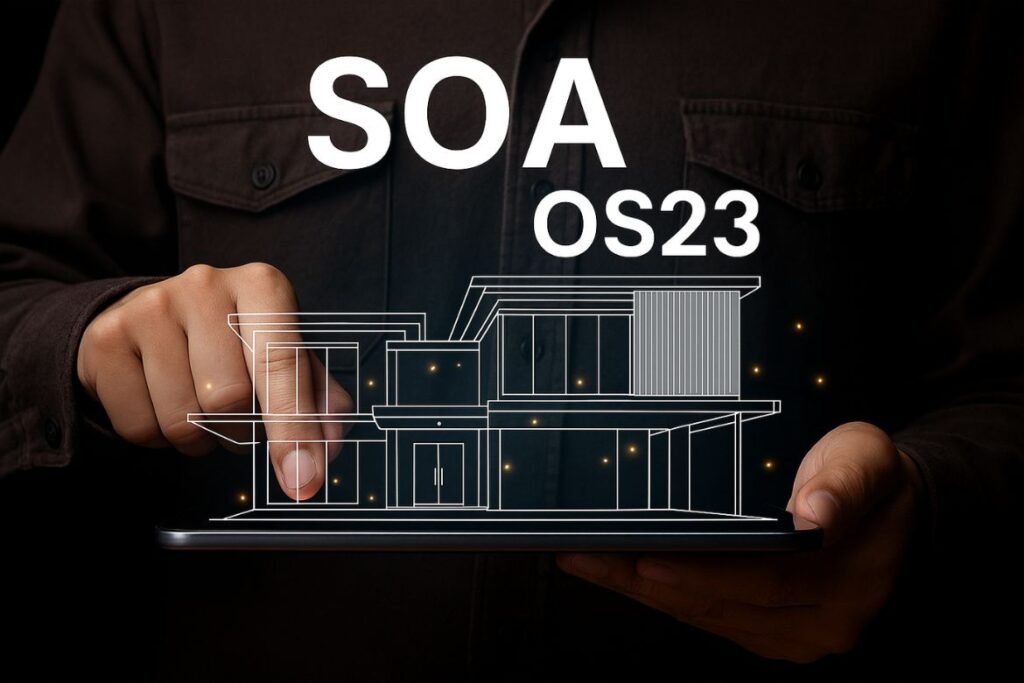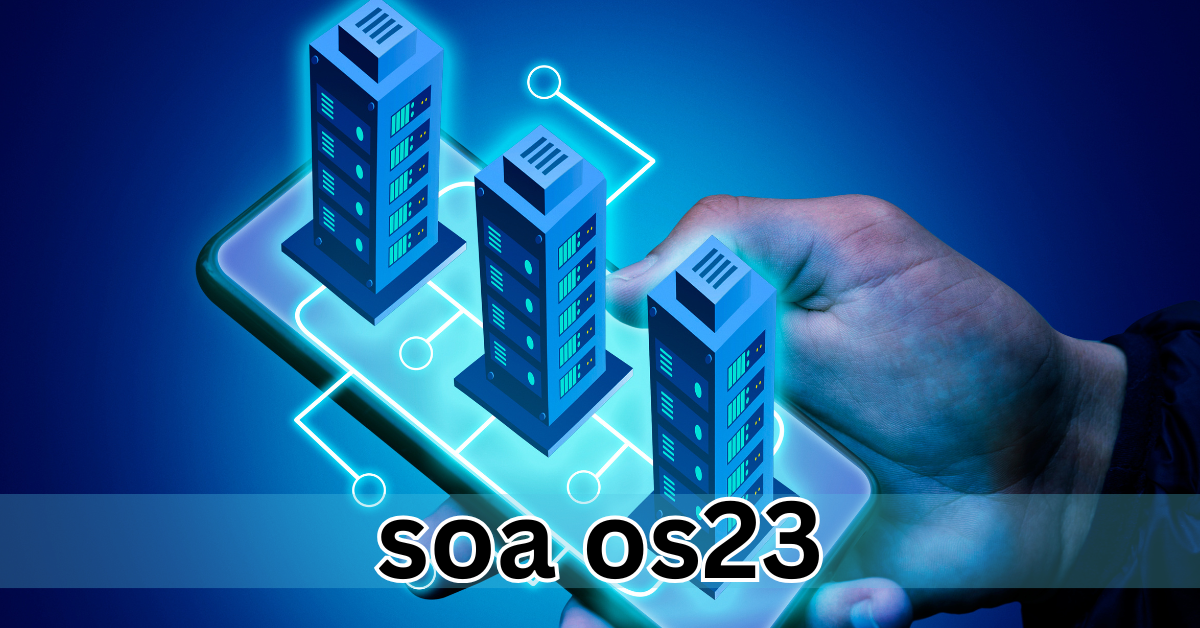in the ever-evolving landscape of construction and public works, the concept of space is being redefined not just through physical rebuilding but via smart, technology-driven processes. SOA OS23, a key certification in Italy’s public procurement system, stands at the forefront of this transformation. This certification, focused on demolition works, ensures that companies meet rigorous standards for safety, efficiency, and environmental responsibility when handling public contracts. But why is SOA OS23 so crucial today? With Italy’s infrastructure projects booming under EU recovery funds, certified firms are unlocking billions in opportunities while embracing digital tools that streamline everything from planning to execution. In 2025, digital innovation at SOA OS23 isn’t just an add-on it’s revolutionizing how we reimagine urban spaces, making demolitions safer, greener, and more precise. This article dives deep into the certification, its digital advancements, and why it’s essential for forward-thinking contractors.
What Is SOA OS23? A Core Overview
SOA OS23 refers to the qualification for “demolizione di opere” (demolition of works) under Italy’s Società Organismi di Attestazione (SOA) system. Governed by Annex A of Presidential Decree 207/2010, this specialized category falls within the OS (Opere Specializzate) classifications, which cover niche areas in public works. Unlike general categories (OG), OS23 specifically addresses the complexities of demolition, including structural dismantling, industrial plant removal, and handling reinforced concrete structures.
At its heart, SOA OS23 certification verifies a company’s technical, financial, and organizational capabilities to undertake demolition projects safely and compliantly. It’s mandatory for public contracts exceeding €150,000, ensuring that only qualified entities participate in tenders. This isn’t merely bureaucratic it’s a safeguard that promotes high standards in an industry where errors can lead to environmental hazards or safety risks. For businesses, holding SOA OS23 means gaining a competitive edge in Italy’s €30 billion public works market, especially as urban renewal projects accelerate.
Historical Context and Evolution
The SOA system was established to standardize qualifications for public works, evolving from earlier regulations to address modern challenges like sustainability. OS23 emerged as a response to the growing need for specialized demolition expertise, particularly in densely populated areas where precision is paramount. Over the years, it has incorporated updates to align with EU directives on waste management and circular economy principles, making it more relevant in today’s eco-conscious environment.
The Importance of SOA OS23 in Public Tenders
In Italy’s public procurement landscape, SOA OS23 acts as a gatekeeper for demolition-related bids. Without it, companies are sidelined from major projects, such as urban redevelopment or infrastructure upgrades funded by national and EU programs. The certification integrates seamlessly with platforms like MePA (Mercato Elettronico della Pubblica Amministrazione), Italy’s digital tender system, allowing certified firms to submit bids efficiently.
What sets SOA OS23 apart is its emphasis on proven track records. Applicants must demonstrate past projects, financial stability, and compliance with safety protocols. This not only filters out unqualified players but also fosters innovation, as certified companies often invest in advanced technologies to maintain their status.
Integration with Broader SOA Categories
SOA certifications are divided into general (OG) and specialized (OS) categories, with OS23 being one of over 50 specialized ones. For demolition firms, combining OS23 with related categories like OS2-A (restoration) or OG1 (civil buildings) can broaden tender eligibility. This modular approach mirrors the flexibility needed in complex projects, where demolition is just one phase.
Digital Innovation Transforming SOA OS23
Digital innovation at SOA OS23 is reimagining how space is managed and repurposed. Traditional demolition relied on manual planning and heavy machinery, but today’s certified projects leverage cutting-edge tools to enhance accuracy and sustainability.
Building Information Modeling (BIM) in Demolition Planning
BIM has become a game-changer for SOA OS23-compliant works. This digital representation of physical spaces allows teams to simulate demolitions in 3D, identifying risks like structural instabilities before breaking ground. For instance, in urban settings, BIM integrates with GIS (Geographic Information Systems) to map underground utilities, reducing accidents by up to 30%. Companies with SOA OS23 certification are increasingly required to demonstrate BIM proficiency during audits, aligning with Italy’s push for digitized public works.
AI and Predictive Analytics for Safer Operations
Artificial intelligence is elevating SOA OS23 by predicting outcomes in real-time. AI-driven software analyzes site data to optimize demolition sequences, minimizing dust pollution and noise key concerns in residential areas. Predictive maintenance on equipment ensures compliance with safety standards, while machine learning models forecast waste volumes for better recycling strategies. This not only meets regulatory demands but also cuts costs by 15-20% through efficient resource allocation.
Drones and Robotics: On-Site Revolution
Drones provide aerial surveys for pre-demolition assessments, offering high-resolution imagery that informs precise planning under SOA OS23 guidelines. Robotics, such as remote-controlled demolition machines, handle hazardous tasks, enhancing worker safety. These innovations are particularly vital for controlled demolitions involving explosives or high-rise structures, where human error could be catastrophic.
Key Trends in SOA OS23 for 2025
As we approach 2025, several trends are shaping SOA OS23, driven by regulatory shifts and technological advancements.
Sustainability and Circular Economy Focus
EU Green Deal influences require SOA OS23-certified firms to prioritize recycling, with mandates for 70% material reuse in demolitions. Digital tools track waste streams, ensuring compliance and turning debris into resources for new constructions.
Digitized Compliance and Audits
Virtual audits via cloud platforms are streamlining the three-year review process for SOA OS23. Blockchain for document verification adds transparency, reducing fraud risks in tenders.
Hybrid Demolition Techniques
Combining traditional methods with tech like water-jet cutting or diamond wire sawing is on the rise, supported by SOA OS23’s emphasis on innovative practices.
Benefits of Obtaining SOA OS23 Certification
Securing SOA OS23 opens doors to lucrative contracts while building credibility. Certified companies report 25% higher bid success rates and access to EU-funded projects. It also encourages internal improvements, like adopting ISO standards for quality management, leading to long-term operational efficiencies.
| SOA Category | Description | Key Requirements | Typical Project Value Threshold | Validity Period |
|---|---|---|---|---|
| OS23 (Demolition) | Covers structural and controlled demolitions, waste management | Proof of 5+ years experience, financial audits, safety certifications | > €150,000 | 5 years (with 3-year review) |
| OG1 (Civil Buildings) | General construction of buildings | Technical staff qualifications, equipment inventory | > €150,000 | 5 years |
| OS2-A (Restoration) | Surface restoration and decoration | Specialized artisan skills, historical project references | > €150,000 | 5 years |
| OS21 (Special Foundations) | Foundations and underground works | Geotechnical expertise, machinery certification | > €150,000 | 5 years |
| OG11 (Technological Installations) | Electrical, mechanical installations | Engineering licenses, installation portfolios | > €150,000 | 5 years |
Challenges in Implementing SOA OS23 and Solutions
Despite its advantages, pursuing SOA OS23 isn’t without hurdles. High initial costs for audits (up to €10,000-€50,000 depending on scope) and documentation burdens deter smaller firms. Solution: Partner with consultancies specializing in SOA applications to streamline processes.
Regulatory changes, like updated EU environmental laws, add complexity. Staying informed through industry associations and investing in training ensures ongoing compliance.
How to Obtain SOA OS23 Certification: A Step-by-Step Guide
- Assess Eligibility: Review your company’s financials, past projects, and technical capabilities against OS23 criteria.
- Gather Documentation: Compile balance sheets, project portfolios, and safety records.
- Apply to an SOA Body: Submit to one of Italy’s accredited organisms for evaluation.
- Undergo Audit: Expect site visits and interviews; demonstrate sustainability practices.
- Receive Certification: If approved, integrate with digital platforms like MePA.
- Maintain Compliance: Prepare for triennial reviews with updated data.
Timeline: 30-90 days, with costs varying by project scale.
FAQ: Common Questions About SOA OS23
What does SOA OS23 stand for?
SOA OS23 is the certification category for demolition works under Italy’s SOA system, ensuring companies are qualified for public tenders involving structural dismantling.
Is SOA OS23 mandatory for all demolition projects in Italy?
It’s required for public contracts over €150,000, but beneficial for private ones to boost credibility.
How long is SOA OS23 certification valid?
Five years, with a mandatory review after three years to verify ongoing compliance.
Can foreign companies obtain SOA OS23?
Yes, through local SOA bodies or joint ventures with Italian firms, provided they meet the qualifications.
What role does digital innovation play in SOA OS23?
Digital tools like BIM and AI enhance planning, safety, and sustainability, making demolitions more efficient and compliant.
How much does SOA OS23 certification cost?
Costs range from €5,000 to €50,000, depending on company size and certification scope, including audits and documentation.
What are the key trends for SOA OS23 in 2025?
Sustainability focus, digitized audits, and integration of AI and robotics are driving changes.
Conclusion: Embrace the Future of Space Reimagination
SOA OS23 is more than a certification it’s a catalyst for reimagining space through responsible, innovative demolition. By blending regulatory rigor with digital advancements, it empowers companies to contribute to Italy’s sustainable infrastructure goals. If you’re in construction or demolition, pursuing SOA OS23 could be your next strategic move. Start by assessing your eligibility today and explore resources like the official SOA website or EU procurement guidelines for deeper insights. In a world where space is precious, let’s build and demolish smarter.



23 Comments
I appreciate how you’ve structured this information in a logical, easy-to-follow manner. Among other resources, Topic Merger stands out for clarity.
It’s interesting how SOA OS23 is helping to standardize these tech-driven processes in demolition—I found a related discussion about efficient resource management at https://tinyfun.io/game/labubu-clicker, which touched on similar ideas. Wondering if the certification will expand to other areas of construction soon.
belgium tour package Victoria H. Loved the Turkish night show! The whirling dervishes were mesmerizing. https://algolinkers.agency/backlink-packages-for-competitive-niches-187/
bhutan tours and travels Emily R. ★★★★★ The sunrise hot air balloon flight was pure magic! Our pilot Erkan pointed out all the fairy chimneys as we floated over Rose Valley. Worth every penny! https://www.dare2exploretheworld.com/tour-details.php?TourName=8-days-special-wonderful-father-day-tour-turkey
kyrgystan tours Sophie L. Our guide Ayşe was the best! She explained everything about Turkish history with passion. https://www.worldtravelawards.com/profile-45937-travelshop-booking
antyla Harper L. ★★★★★ Family review: Kids LOVED making fairy chimney rock sculptures! Guides engaged children brilliantly. Babysitter service available too. https://anandinstitutebhopal.com/from-kebabs-to-baklava-a-culinary-journey-with-turkey-tours/
cyprus tour packages Lily B. Our pilot made the balloon landing feel like a feather. So smooth! http://www.pascallefichant.com/5-day-bulgaria-tour.html
cappadocia tours booking Hannah J. We joined a Turkish night in Cappadocia — the food, the music, the dance… everything was perfect! https://masstamilan.in/discover-the-best-of-turkey-with-a-holiday-package/
best all inclusive tours David P. ★★★☆☆ Balloon flight amazing BUT… 3AM pickup felt brutal. Warn clients about pre-dawn starts! https://masstamilans.com/antalya-excursions-exploring-the-best-of-the-turkish-riviera.html
austria tour packages Jack P. The Red Tour in Cappadocia covered so many amazing places in one day. https://limoscene.us/budget-istanbul-tours-affordable-adventures-in-turkey/
antalaya turkey James T. The ATV tour through Cappadocia was thrilling! Dusty, fast, and full of fun. Don’t forget sunglasses and a scarf! https://masstamilan.me/discover-the-beauty-and-culture-of-turkey-with-a-tour-package/
📊 Build your weekend slip with Football prediction—model-driven picks, live odds context, and injury form overlays so you can compare edges game by game before you stake.
tours in albania Zoe C. Pamukkale’s white terraces looked like snow. Unreal beauty. https://go2travel.tv/5-days-new-year-package-istanbul-kusadasi-tour-2024/
fun fact about russia Aisha M. ★★★★★ Cultural immersion exceeded expectations! Learned pottery in Avanos using ancient techniques, then dined with a local family. Unforgettable! https://tr.indeed.com/viewjob?jk=fe8d655e17b0d858
urfa tour We made so many new friends during the tour thanks to the great group dynamic. https://www.getyourguide.com/tr-tr/travelshop-turkey-s1898
Excellent breakdown, I like it, nice article. I completely agree with the challenges you described. For our projects we started using Listandsell.us and experts for our service, Americas top classified growing site, well can i ask zou a question regarding zour article?
Excellent breakdown, I like it, nice article. I completely agree with the challenges you described. For our projects we started using Listandsell.us and experts for our service, Americas top classified growing site, well can i ask zou a question regarding zour article?
Excellent breakdown, I like it, nice article. I completely agree with the challenges you described. For our projects we started using Listandsell.us and experts for our service, Americas top classified growing site, well can i ask zou a question regarding zour article?
is it safe to travel to turkey because of ukraine The hotels chosen were clean, comfortable, and conveniently located. It made exploring much easier. https://www.instagram.com/travelshoptr/
all inclusive vacation packages to europe Oscar R. The Ephesus ruins are mind-blowing. Our guide was so passionate. https://share.google/Vlue3hZ1Q1QJ1ePOX
amboseli holidays Sarah M. The Bosphorus cruise was stunning. Seeing both sides of Istanbul from the water was unforgettable. http://bdrox.com/ancient-aspendos-hear-historys-echoes-with-turkey-tours/
Ephesus tours Turkey Christina F. – Endonezya https://belasartchive.shop/?p=3433
I have been surfing online more than 3 hours today yet I never found any interesting article like yours It is pretty worth enough for me In my opinion if all web owners and bloggers made good content as you did the web will be much more useful than ever before